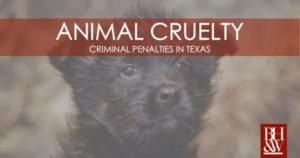Animal cruelty laws are a crucial component of the legislative framework designed to protect non-human creatures from abuse and neglect. In Texas, the scope of these laws is expansive, yet it often sparks discussion regarding the very foundation of what constitutes an “animal” in the eyes of the law. This article seeks to elucidate the types of animals covered under Texas animal cruelty laws, exploring the nuances and implications of these protective statutes.
At the outset, it is essential to delineate the term “animal” as defined by Texas law. The Texas Penal Code refers to animals in several contexts, primarily under Chapter 42, which articulates the offense of animal cruelty. This definition significantly influences the legal protections afforded to various species, and it encompasses a broad spectrum of sentient beings, although not without limitations.
Firstly, the inclusive definition covers a variety of domesticated animals, such as dogs and cats, which are often seen as companions within human households. These species, owing to their close relationship with humans, garner heightened legal protections. The law presupposes that such interactions necessitate a responsibility to ensure their well-being. Consequently, acts of neglect or cruelty towards these animals are met with legal reprimands, reflecting society’s recognition of their emotional and physiological needs.
However, the reach of Texas animal cruelty laws does not stop at domestic companions. Livestock animals—including cattle, sheep, goats, and poultry—also fall under this legislative umbrella. This inclusion is particularly significant given that livestock plays an integral role in the state’s agricultural economy. Nonetheless, the welfare standards for livestock differ from those of companion animals. While humane treatment is mandated, the legal framework allows for a degree of acceptability within agricultural practices that might not apply to pets. This duality can provoke debate, as it raises questions about the ethical treatment of animals utilized for food production versus those kept as family members.
An interesting aspect of Texas animal cruelty laws is their application to wildlife. The legislation does implicitly recognize the existence of wild animals, but the protections afforded are primarily indirect. This distinction arises because wildlife is generally governed by a different set of regulations pertaining to hunting and wildlife conservation. Any act of malicious harm against wild animals often intersects with laws related to poaching and wildlife trafficking, making the prosecution of cruelty cases against these creatures more complex. Nevertheless, this complexity highlights a societal ambivalence toward wildlife—while there is admiration and fascination towards these creatures, they frequently lack the same protections as domesticated animals.
Additionally, Texas law acknowledges other non-traditional animals, which include exotic pets such as reptiles, birds, and small mammals. As the popularity of keeping such animals increases, the implications of animal cruelty laws become more pronounced. These creatures, often treated as companions, are still subjected to varying degrees of legal protection. The absence of stringent regulations regarding the ownership and care of exotic animals raises significant concerns among animal welfare advocates. The underlying fascination with these non-conventional pets can sometimes lead to neglect, as an owner’s lack of understanding of their specific needs fosters an environment ripe for cruelty.
Furthermore, the definition of “animal” in Texas laws raises intriguing questions about specific species that might fall through the cracks of legal protection. For instance, certain invertebrates and aquatic animals are not explicitly covered by the same statutes designed to protect mammals and birds. This loophole poses ethical dilemmas, particularly in contexts such as aquatic life where creatures like fish or crustaceans are subject to commercial practices that may not prioritize their welfare. As society becomes more aware of the sentient nature of various life forms, there is a growing call for a reevaluation of what constitutes an animal under cruelty laws, which could lead to a wider net of protection for all living creatures.
Importantly, discussions surrounding animal cruelty laws must also address the role of education and awareness in preventing acts of cruelty. The fascination that humans have with animals—stemming from their loyalty, grace, and intelligence—underscores the necessity of understanding the responsibilities that accompany animal ownership. Educational initiatives aimed at schools and communities can cultivate a deeper appreciation and respect for all animals, ultimately contributing to a culture of empathy rather than one of neglect.
Ultimately, Texas animal cruelty laws encompass a diverse array of species, each capable of experiencing suffering. The implications of these laws resonate not just within legal circles, but also throughout society, challenging individuals to reflect upon their relationships with animals. Whether as beloved pets or as creatures inhabiting the wild, animals invoke a sense of wonder and responsibility. The ongoing discourse surrounding who is protected under these laws not only highlights the complexities of animal ethics but also serves as a mirror revealing humanity’s evolving understanding of its obligation to protect the vulnerable.
As we navigate this intricate landscape, it is imperative to champion for comprehensive animal protection laws that recognize the intrinsic value of all creatures. Only then can we take meaningful strides toward ensuring that cruelty, in any form, becomes an aberration rather than a norm.








